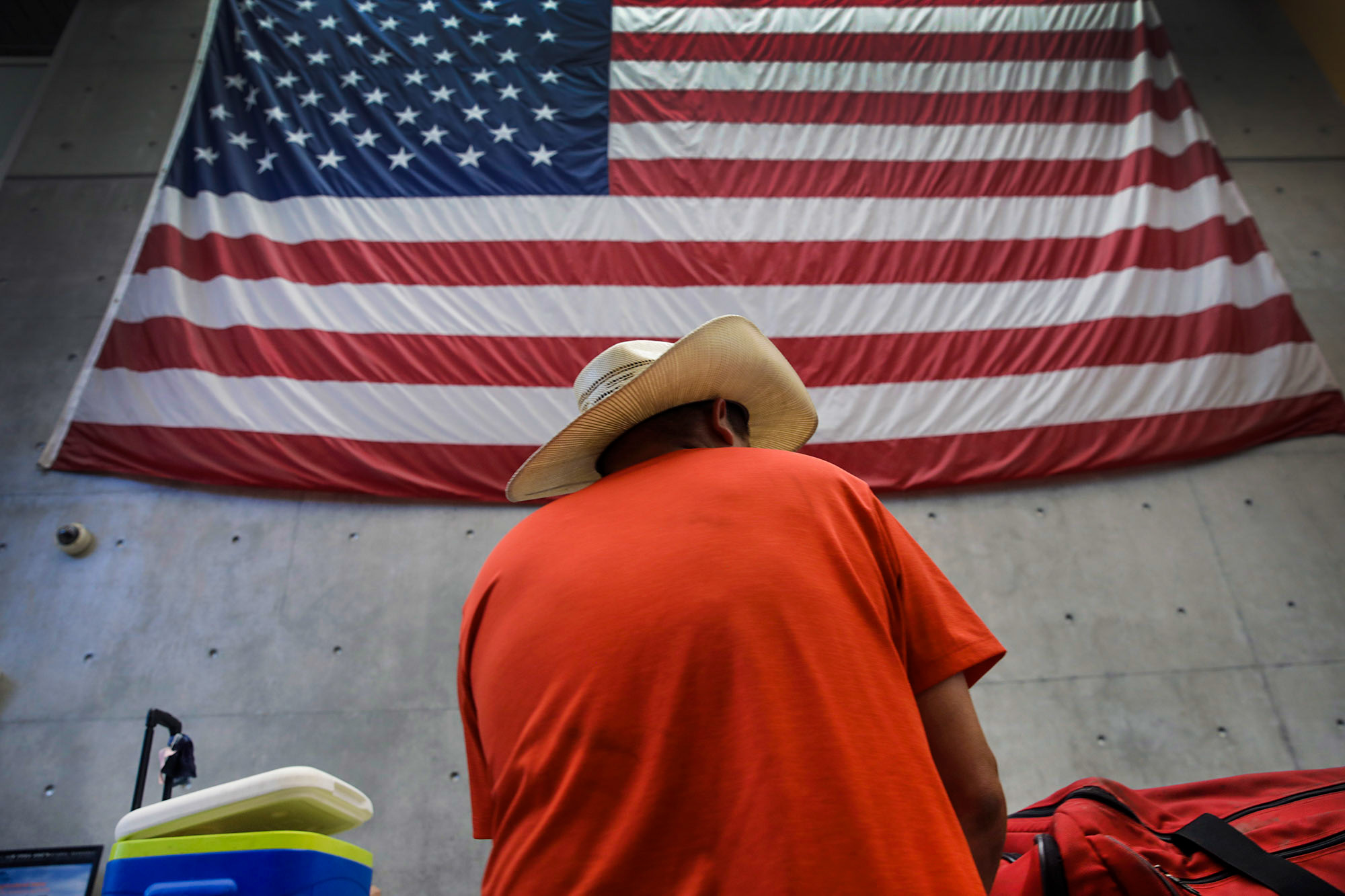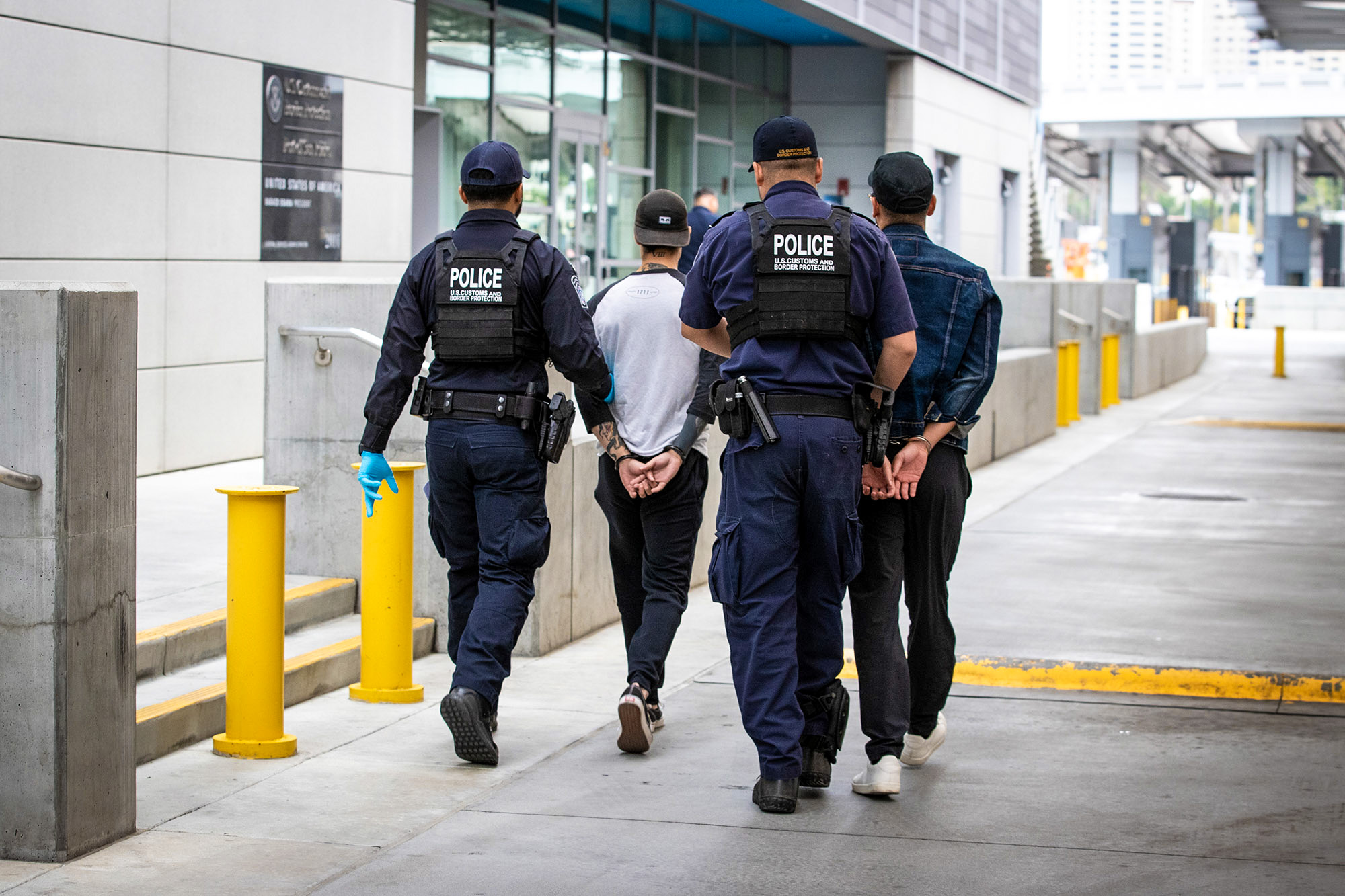Indianz.Com > News > Cronkite News: Bipartisan immigration and border bill faces uncertain future

Border bill includes funds for local communities, along with Ukraine, Israel
Tuesday, February 6, 2024
Cronkite News
WASHINGTON, D.C. — The bipartisan immigration reform bill unveiled in the Senate late Sunday includes $1.4 billion to help border communities grappling with the migrant surge, in addition to funding for Ukraine and Israel.
The money for the Migrant Shelter and Services Program, which helps communities and nonprofits along the border provide assistance to migrants, is part of a $6 billion pot of money in the bill that would go toward beefing up border security.
But the overall $118 billion measure faces an uphill fight in Congress, where critics from both sides of the aisle have attacked it and House Speaker Mike Johnson declared it “dead on arrival” even before seeing the bill.
But officials in border towns said Monday that it is “not the perfect bill, but it’s a great step in the right direction.” “It’s one of those things that we’ve been asking for for a while. It really focuses on our nonprofits,” said Yuma Mayor Doug Nicholls. “That funding will help bolster our nonprofits and make sure that the great work that they’ve been doing can continue until this thing truly gets resolved.” That optimism was echoed by Douglas Mayor Donald Huish who said he believes the bill would “help everyone involved because it will force the orderly immigration into our country.” The bill includes billions of dollars in aid for Ukraine, Israel and Taiwan, along with increased Pentagon funding to replenish military supplies that have been transferred to those nations. But the bulk of the 370-page bill is aimed at restricting immigration. Among those changes is a proposal to grant the government new authority to shut down the border when immigration reaches a certain daily threshold: The Homeland Security Department could shut it down when the number of migrants averaged 4,000 per day over a week, and would be required to shut it down when the average hits 5,000. The bill also includes funding to hire more Border Patrol agents. The bill also includes language that would tighten asylum standards and would take processing of asylum claims out of the courts – where it can currently up to a decade for a case to be heard – and puts in the hands of U.S. Citizenship and Immigration Services officers. USCIS would have to hear cases within six months, one step toward ending what critics call the current “catch-and-release” process of handling asylum seekers.This immigration bill is dead on arrival in the House.⁰⁰We will not pass immigration legislation that further incentivizes illegal immigration, does not reform asylum and parole in a meaningful way, and empowers President Biden and his cabinet, the architects of this… pic.twitter.com/IbD1KAQSOZ
— Speaker Mike Johnson (@SpeakerJohnson) February 6, 2024

Note: This story originally appeared on Cronkite News. It is published via a Creative Commons license. Cronkite News is produced by the Walter Cronkite School of Journalism and Mass Communication at Arizona State University.
Search
Filed Under
Tags
More Headlines
Native America Calling: Remembering Ben Nighthorse Campbell and Harvey Pratt
President Trump vetoes tribal homelands bill with swipe at trust relationship
Native America Calling: The Pleiades star cluster ushers in winter story season
NAFOA: 5 Things You Need to Know This Week (January 5, 2026)
Native America Calling: Native in the Spotlight with Elaine Miles
Native America Calling: Gearing yourself up for 2026
Statement: Chairman of Miccosukee Tribe on veto of homelands bill
Native America Calling: Lumbee Nation secures its sovereign status
Chuck Hoskin: Cherokee Nation builds on tradition with technology
Native America Calling: The Year in Native News
Native America Calling: Native music in 2025
Native America Calling: Amid Greenland’s independence push, Denmark accounts for colonial blunders
Senate Committee on Indian Affairs sets business meeting and hearing
Native America Calling: Saving historic architecture and other important places
VIDEO: H.R.2400, the Pit River Land Transfer Act of 2025
More Headlines
President Trump vetoes tribal homelands bill with swipe at trust relationship
Native America Calling: The Pleiades star cluster ushers in winter story season
NAFOA: 5 Things You Need to Know This Week (January 5, 2026)
Native America Calling: Native in the Spotlight with Elaine Miles
Native America Calling: Gearing yourself up for 2026
Statement: Chairman of Miccosukee Tribe on veto of homelands bill
Native America Calling: Lumbee Nation secures its sovereign status
Chuck Hoskin: Cherokee Nation builds on tradition with technology
Native America Calling: The Year in Native News
Native America Calling: Native music in 2025
Native America Calling: Amid Greenland’s independence push, Denmark accounts for colonial blunders
Senate Committee on Indian Affairs sets business meeting and hearing
Native America Calling: Saving historic architecture and other important places
VIDEO: H.R.2400, the Pit River Land Transfer Act of 2025
More Headlines